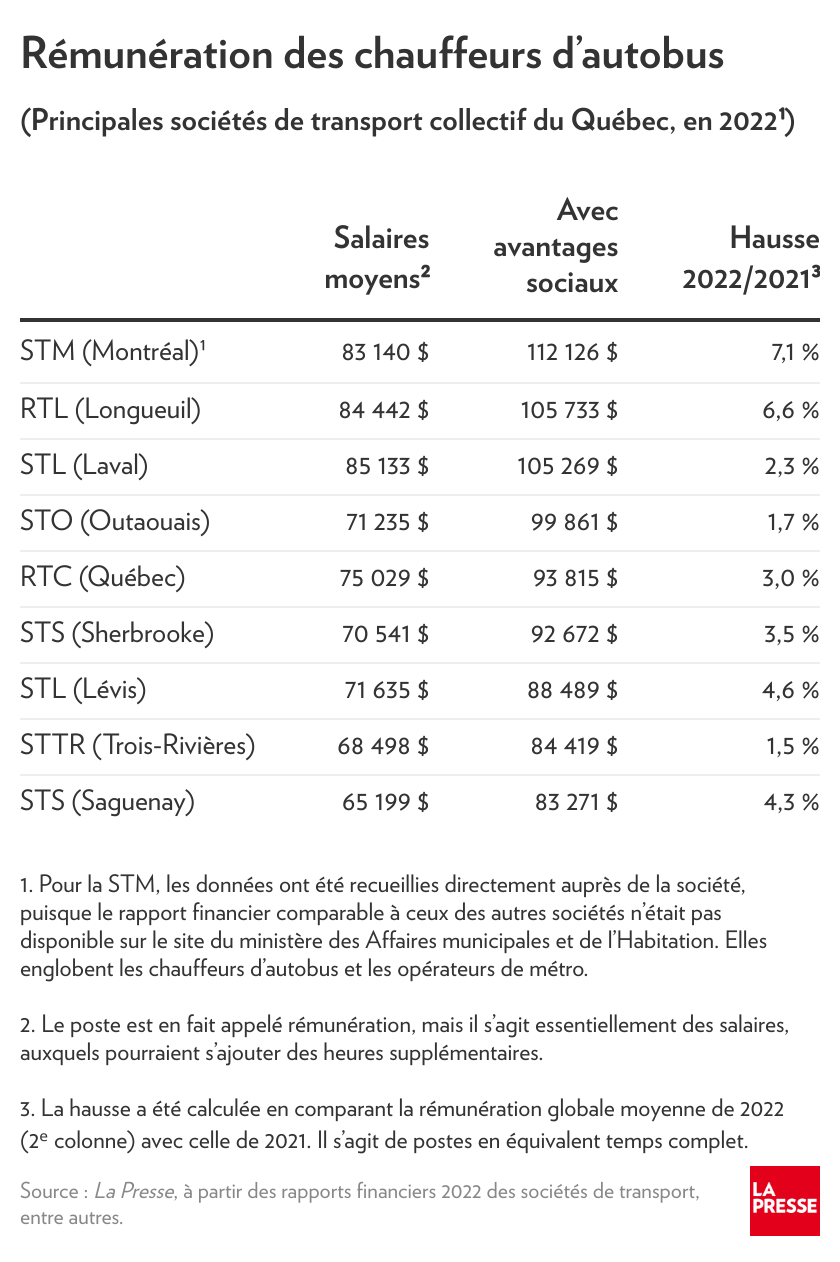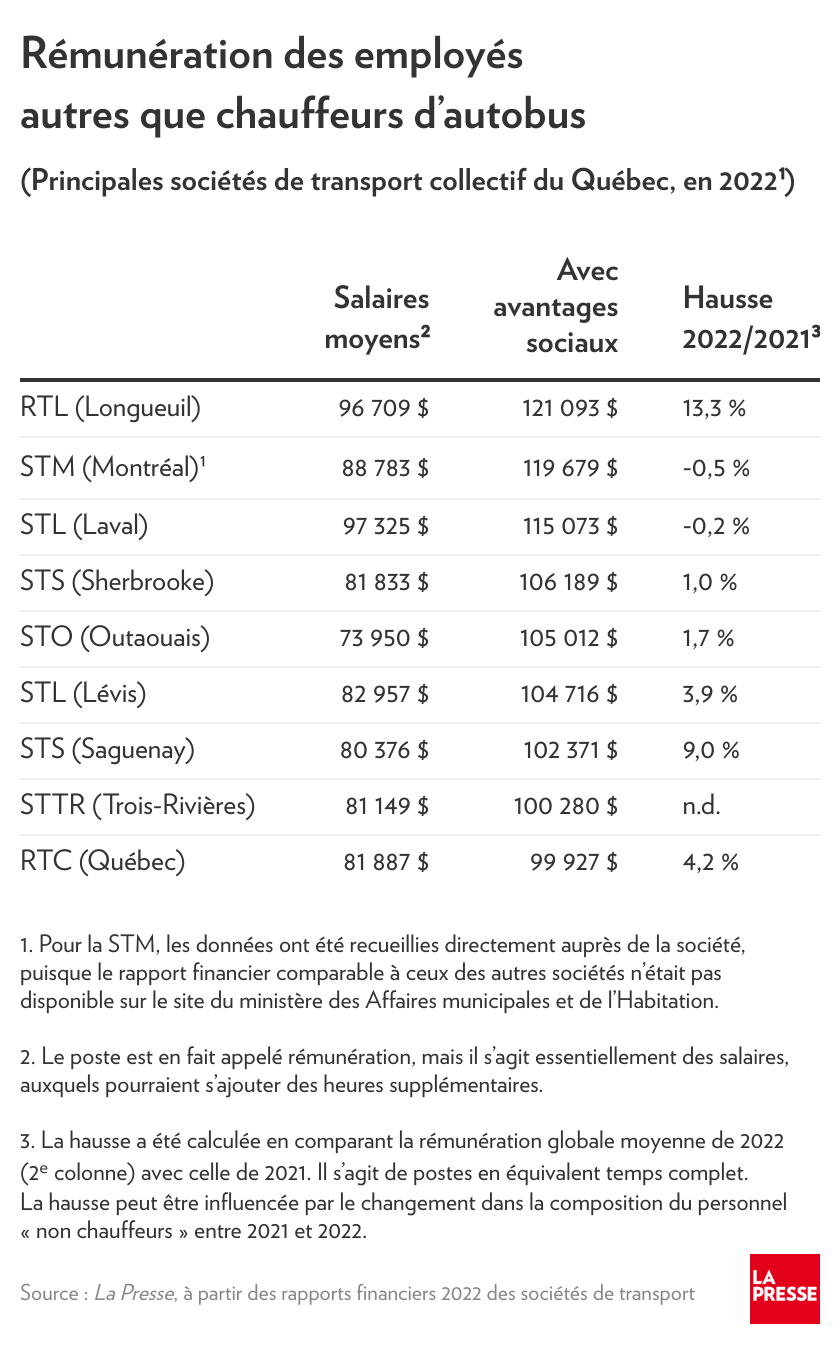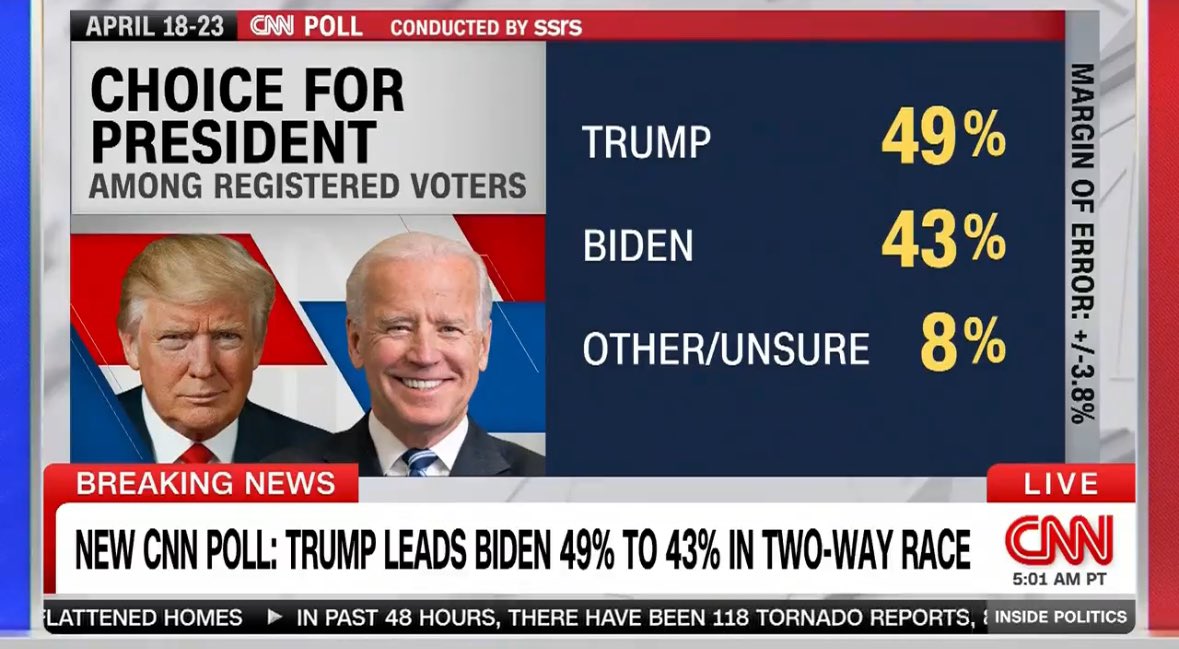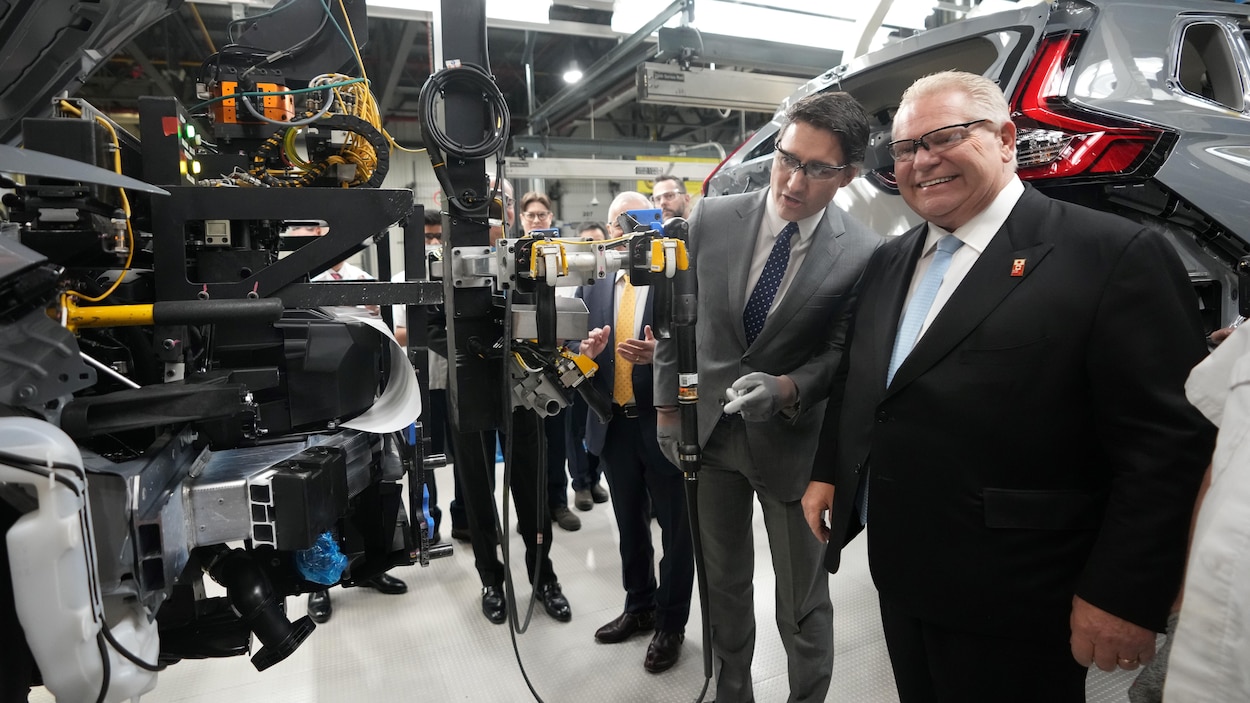Transport Minister Genevieve Guilbault will conduct an audit of the performance of 11 public transportation companies in Quebec. Its ultimate goal: to find savings and waste1.
She believes that we should question the management of these companies, especially “when we see that we are increasing CEO salaries during the pandemic, while there is no longer anyone on public transportation.”
Municipalities responded that their deficit was large, that the additional 265 million provided by Quebec for 2024 was insufficient and that carriers would be forced to reduce service. Who is telling the truth?
To get a sense of what the accounting firm conducting the audits might find, I reviewed the financial reports of nine of the carriers, as well as contacted their managements when information was missing.
There are top executive bonuses, which I already covered in a previous column2. But what about bus drivers and other employees? What about the evolution of the workforce since the decline in passenger numbers?
First observation: Drivers for all transportation companies saw their average wages increase in 2022, sometimes significantly, despite traffic problems.3.
Transport Montreal (STM) is in the lead with 7.1%, followed by Network Transport in Longueuil (RTL) with 6.6%.
This increase relates to gross wages, which includes social benefits, for example employer contributions to a retirement plan. Overall, the average wage for full-time drivers exceeds $100,000 in three companies, located in the Montreal area (STM, RTL, and Société de Transport de Laval).
The STM comes out on top at $112,126. Below, in Conveyance de Saguenay, we have $83,271. Excluding social benefits, the average wage for drivers ranges between $65,200 and $84,440. This last amount is closest to the pay drivers actually receive.
Note that social benefits cost STM and the Société de Transport de l’Outaouais a fortune. They represent 35% and 40% of salary respectively, compared to 26% elsewhere. Obviously, pension plans are very fat.

Why these wage increases? At the STM, the 7.1% increase is justified by the overtime worked by metro drivers and operators to compensate for increased absences linked in particular to COVID-19. The collective agreement provides for a bonus for overtime.
Another, more technical reason: STM says it has limited the hiring of new drivers during this period, as well as a lower number of departures, especially upon retirement. Together, these phenomena had an impact on the increase in the average wage in 2022 and thus the increase compared to 2021.
However, in 2022, drivers at the top of the ladder are entitled to a 2% raise, according to the collective agreement negotiated for 2018. To which are added 7.2% increases between levels for those not at the top of the ladder. peace.
RTL did not answer my questions about this.
I also reviewed salary for positions other than leadership (management, blue collar, white collar, and professional). Since the definition varies from place to place, I chose to group everyone together, which I call “non-drivers.”
Each of these other jobs is paid more than $100,000, on average, at all carriers, if we include social benefits, except for the Metropolitan Transportation Network ($99,927). Longueuil Transport Network ranks first with $121,093.
Without social benefits, wages for “non-drivers” range from about $82,000 to $97,000, depending on networks.4.

These other jobs, which cost more, are numerous. They represent between 30% and 56% of the workforce, depending on the carriers. It is difficult to compare STM, at the top, because of its metro network, which requires a lot of maintenance staff. However, 56% of its employees do not drive buses or the metro.

Has this percentage of “non-drivers” increased in recent years? Yes, for the three companies in the Montreal area that I have an account with. The share rose from 40% to 45% in Longueuil and from 36% to 43% in Laval.

What explains these increases? Various items.
At STM we justify this with major projects under development, such as the extension of the Blue Line and the electrification of the bus fleet.
At the Laval transport company, they explained to me that they had also hired people to take care of the electrification, among other things, but also to operate the three Laval stations, the management contract of which had previously been entrusted to exo.
In the Longueuil transport network, it is reported to receive additional funding from the government for special projects, such as urban facilities management, bridge and tunnel mitigation measures, and transport electrification. For this reason, we cannot compare the number of CEOs in 2022 with previous years. »
In short, there are many reasons, sometimes justified, sometimes less justified, to explain the increase in costs despite the decrease in passenger numbers.
Among the contradictions, in context, is the city of Montreal’s decision to withhold 40 million annually to make transportation free for seniors, regardless of their income.
Cities are right to say that finding solutions will not be easy. The salaries of transportation enterprises, which represent 60% of their expenses, are the main compressible element.
However, the expected deficit in 2024 is equivalent to 22% of these salaries, if we rely on Minister Genevieve Guilbault, or approximately 30%, depending on the municipalities.5.
With the minister’s contribution of 265 million, this share of the remaining deficit decreases to approximately between 7% and 15% of salaries, depending on the numbers of one or the other. How do you close your budget with such a hole?
But in this context of the crisis, it is unreasonable for managers and workers to continue receiving salary increases, as if nothing had happened, even though freezing salaries alone will not be enough to bridge the gap.
Yes, the situation requires difficult negotiations with the unions. But the difficulties facing public transportation will not last forever. Who can justify imposing more taxes on citizens to fund generous salary increases, when the grids are currently half empty?
1. For audits, a call for tenders from an external accounting firm will be launched after the holiday, the Ministry of Transport and Sustainable Mobility has confirmed.
3. I calculated the average wage for each year by dividing the wage by the number of drivers as shown in the financial reports. These reports publish full-time equivalent positions.
4. Variation in job composition makes it difficult to compare average pay increases from year to year, or at least may not be representative of the increase for the typical “non-driver” in 2022.
5. The organizations’ deficit is estimated at 376 million, according to the minister, and about 500 million in municipalities, including 461 million for the four organizations in the Montreal region.

“Music guru. Incurable web practitioner. Thinker. Lifelong zombie junkie. Tv buff. Typical organizer. Evil beer scholar.”







:format(url)/cloudfront-us-east-1.images.arcpublishing.com/lescoopsdelinformation/MJJLV2ZZGRA7NOZ7RPP6N5DJFI.jpg)

